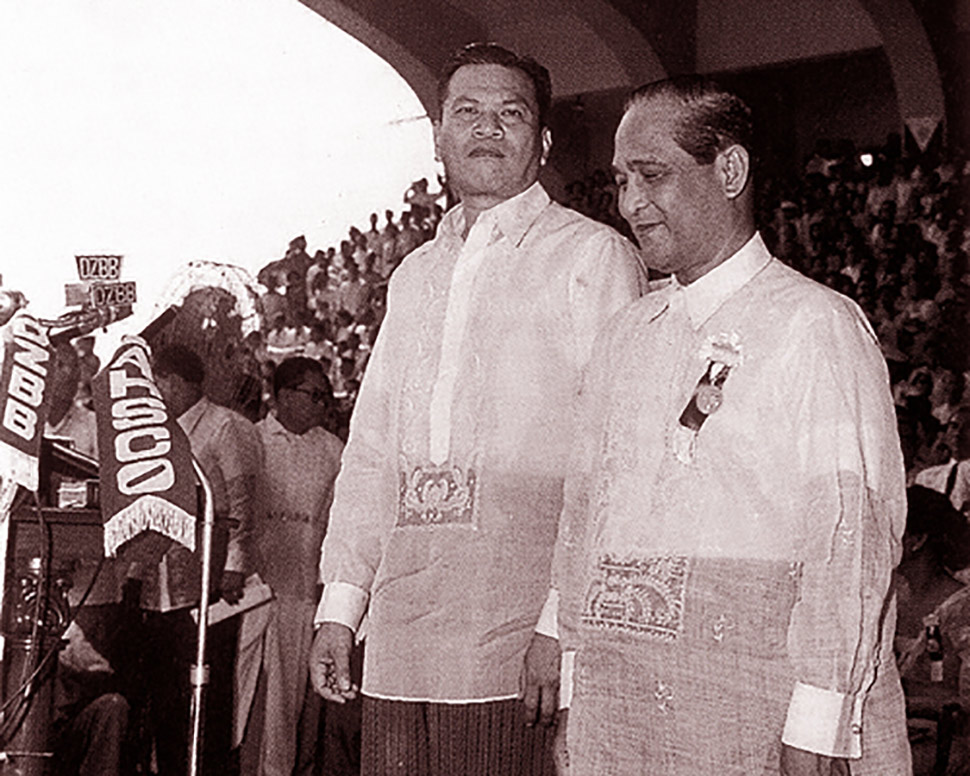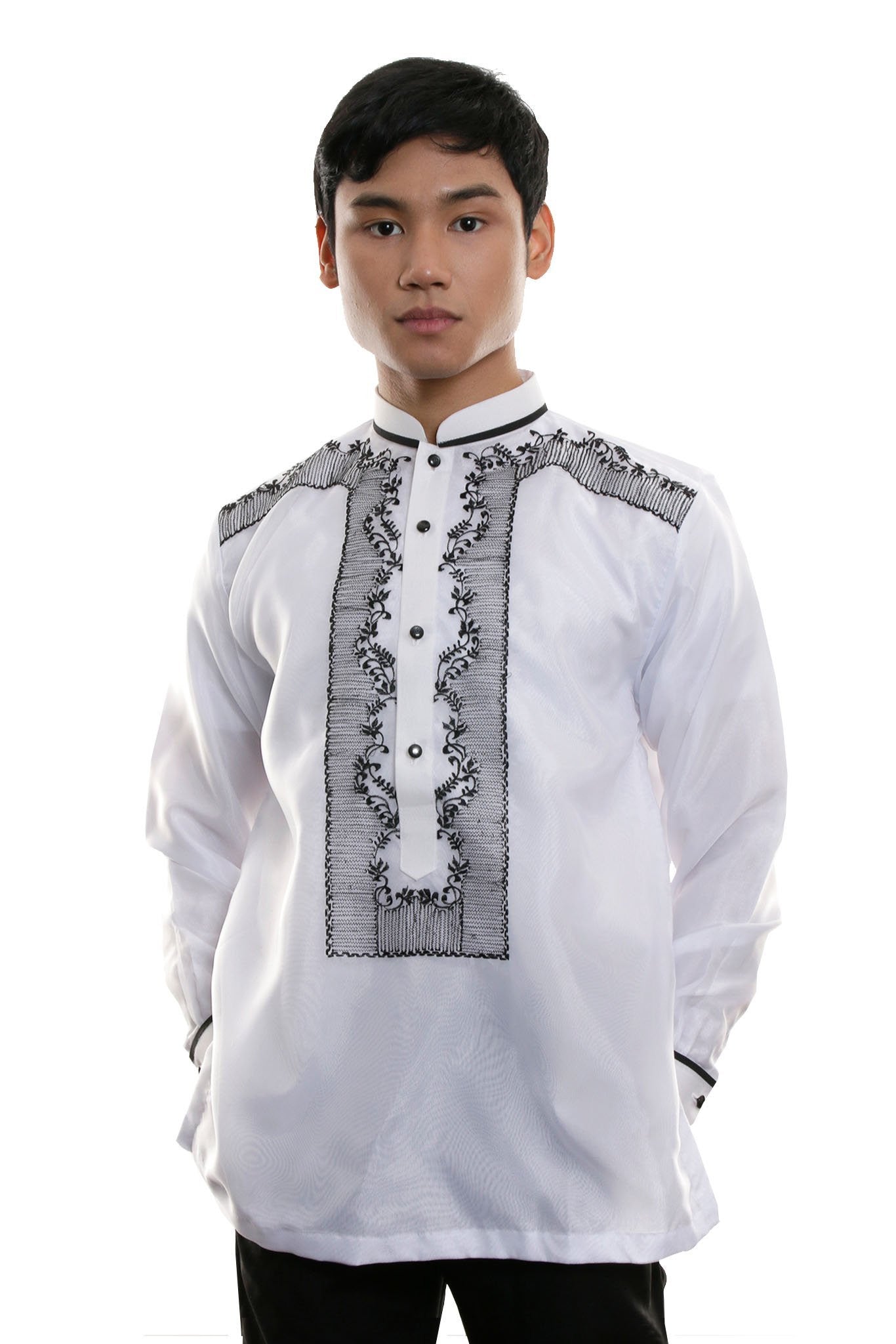An Unbiased View of Barong Tagalog
Table of ContentsThe Ultimate Guide To Where To Buy Barong Tagalog5 Simple Techniques For Barong Tagalog JacketRumored Buzz on Where To Buy Barong Tagalog In Usa

It consists of the enclitic suffix -ng which indicates that it is customized by or changes the next word. The root word of barong is the Tagalog word baro, implying "attire" or "clothes". The term is usually not capitalized. Though "barong tagalog" literally translates to "Tagalog attire", the "tagalog" in the name does not imply that it was a form of dress special to the Tagalog individuals, as opposed to other Philippine ethnic teams.
Rather, the name was coined to identify the dress as native (therefore "tagalog", i. e. ), rather than the styles of outfit of Europeans as well as other foreign societies. Summary [edit] Barong tagalog worn with a salakot. The lady is wearing a. Barong tagalog is a formal tee shirt typically made from large light-weight yet stiff fabric known as (generally woven from pia or abac fibers).
The term camisa de chino is likewise made use of for collar-less and cuff-less tee shirts, named after its similarity to t-shirts used by Chinese laborers. It is used with belted trousers and also dress footwear. Headwear, when used, is either a salakot or a buntal hat (as well as historically additionally leading hats or bowler hats). Barong tagalog can vary substantially in terms of design and material made use of, but they share common qualities of having long sleeves, embroidery, being buttoned (halfway or directly down the chest), as well as the absence of pockets. They are additionally used loosely and also have slits on both sides. Historically, the product utilized for barong tagalog depended on the social course of the user as well as the formality of the celebration.
The Ultimate Guide To Modern Barong Tagalog

The top quality of the material and the complexity of the embroidery were usually indications of the condition and wide range of the user. The embroidery of the barong tagalog are commonly put on a rectangular section on the front of the go to this site breast (called pechera, "t shirt front", from Spanish pecho, "breast"), and/or over the entire tee shirt (sabog, from Tagalog for "spread"). visit.
History [edit] Pre-colonial period [modify] The barong tagalog originated from the Tagalog baro (actually "t shirt" or "apparel", also recognized as bar or bay in other Philippine languages), a straightforward collar-less shirt or coat with close-fitting lengthy sleeves put on by both males and ladies in many ethnic teams in the pre-colonial Philippines. These were made from harsh linen-like cloth woven from native abac fiber, or from imported textiles woven from silk, cotton, as well as kapok, to name a few. Amongst Tagalog males, they were typically combined with a rectangle of highly enhanced cloth referred to as the salaual or salawal used knee-length as well as attracted up in the center (like an Indian or Thai and also Cambodian ); while in ladies they were coupled with a wraparound skirt called the.
However, in the Visayas, other than similar baro (which had shorter sleeves) and also salaual combinations, males likewise put on vivid robe-like and also coat-like variations that can encompass well listed below the knees (referred to as the marlota and baquero in Spanish, specifically). These were sometimes belted at the waist. Among Tagalogs, red dyes and gold trimmings were a measure of belonging to nobility () or the warrior caste () - visit the website.

Facts About Barong Tagalog Uncovered
The couturier Jose "Pitoy" Moreno has actually hypothesized that this transitional design of tee shirt was the camisa de chino of later centuries, that makes it a precursor to the barong tagalog. Representations of members of the upper courses (including natives as well as) in the 18th century showed that they usually put on European-style garments. this content.
These were a lot longer than the modern barong tagalog, getting to to slightly above the knees. They were likewise generally candy striped with strong colors like blue, red, or eco-friendly. Nonetheless, they currently presented characteristics of the contemporary barong tagalog, consisting of being made from large nipis material, embroidery, long sleeves, and a loosened shape with slits on both sides - hop over to these guys.
The large fabric used by barong mahaba also demanded the using of an undershirt, called camisn or camiseta, which was likewise worn on its own by citizens. By the 1840s, barong mahaba greatly befalled of fashion. In this period, it evolved into the contemporary "timeless" barong tagalog, being much shorter with much less ostentatious folded collars, while still retaining the sheer material and also various other baro qualities.